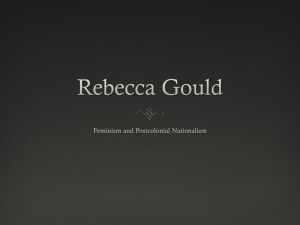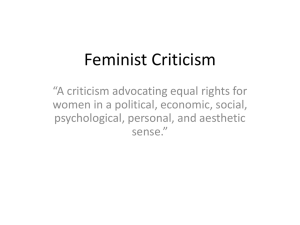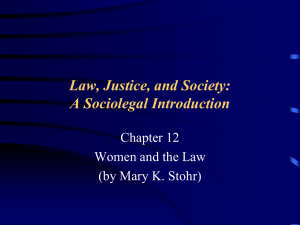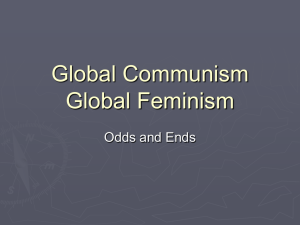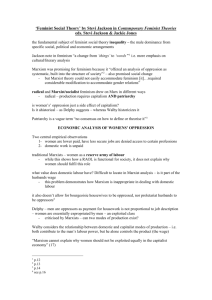Feminism PP
advertisement
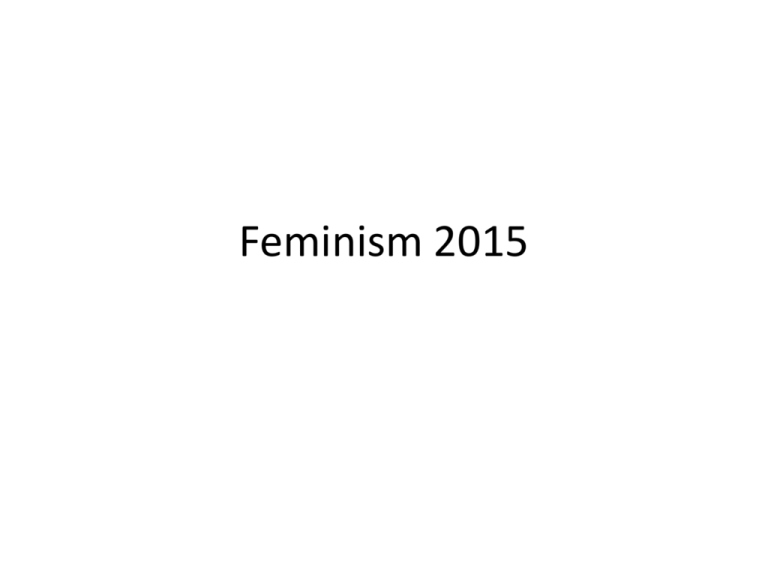
Feminism 2015 S(he) • concerned with the ways in which literature (& other cultural productions) reinforce or undermine – – – – the economic, political, social, & psychological oppression of women. • looks at how aspects of our culture are inherently patriarchal (male dominated) • strives to expose the explicit and implicit misogyny in male writing about women Approaches in Feminism • Women are oppressed by patriarchy primarily thru patriarchal ideology • In every domain where patriarchy reigns, woman is the Other: – marginalized, defined only by her difference from male norms and values • All of Western (Anglo-European) civilization is deeply rooted in patriarchal ideology – e.g. biblical portrayal of Eve as the origin of sin Approaches in Feminism 2 • Biology determines our sex (male/female); culture determines our gender (masculine/ feminine) • ultimate goal is to change the world by prompting gender equality • Gender issues play a part in every aspect of human production and experience, including in literature, whether we are consciously aware of these issues or not. Waves of Feminism First Wave Feminism - Second Wave Feminism - Third Wave Feminism late 1700s-early 1900's: early 1960s-late 1970s: early 1990s-present: writers like Wollstonecraft highlight the inequalities between the sexes. Activists like Susan B. Anthony and Victoria Woodhull contribute to the women's suffrage movement, leads to National Universal Suffrage in 1920 with the passing of the 19th Amendment builds on more equal working conditions necessary in America during World War II, movements such as (NOW) cohere feminist political activism. Writers established the groundwork for the dissemination of feminist theories united with the American Civil Rights movement resisting the perceived essentialist (over generalized, over simplified) ideologies and a white, heterosexual, middle class focus of second wave feminism, third wave feminism borrows from poststructural and contemporary gender and race theories to expand on marginalized populations' experiences. Questions Feminist Critics Ask 1 • How is the relationship between men and women portrayed? – What are the power relationships between men and women (or characters assuming male/female roles)? • How are male and female roles defined? – What constitutes masculinity and femininity? • How do characters embody these traits? – Do characters take on traits from opposite genders? How so? How does this change others’ reactions to them? Questions Feminist Critics Ask 2 • What does the work reveal about the operations (economically, politically, socially, or psychologically) of patriarchy? – What does the work imply about the possibilities of sisterhood as a mode of resisting patriarchy? • What does the history of the work's reception by the public and by the critics tell us about the operation of patriarchy? – What role the work play in terms of women's literary history and literary tradition?

